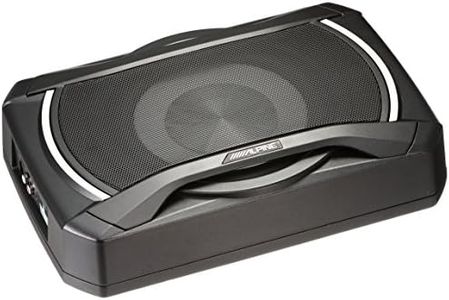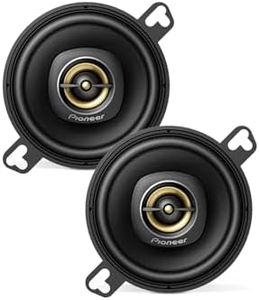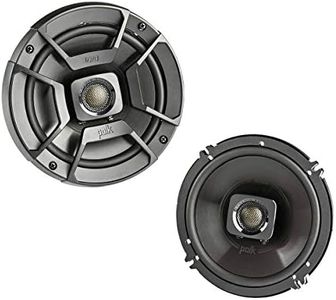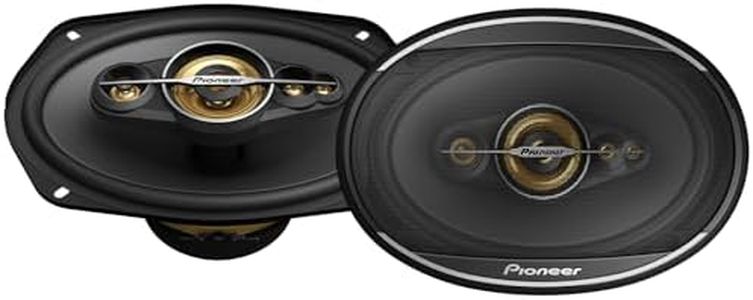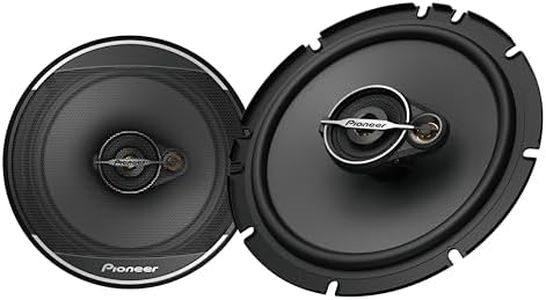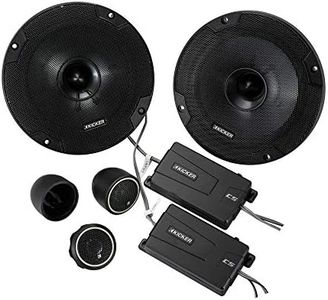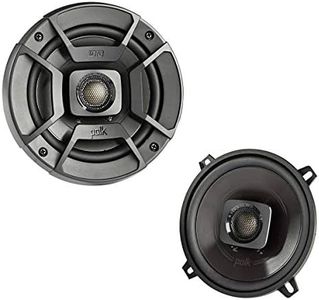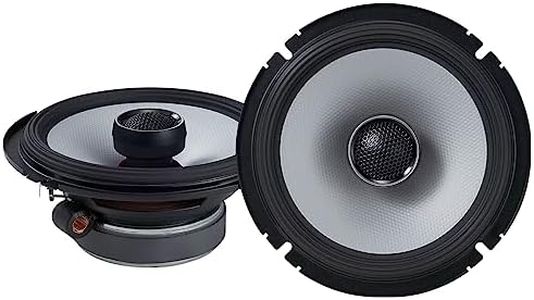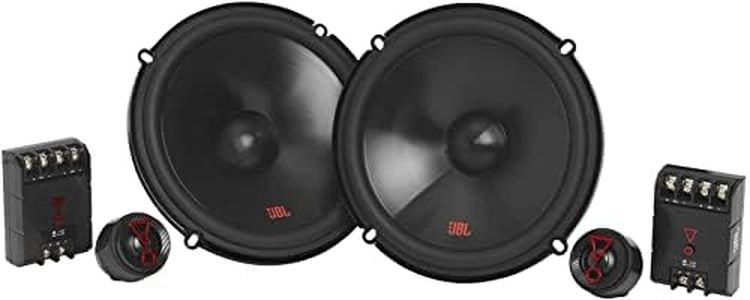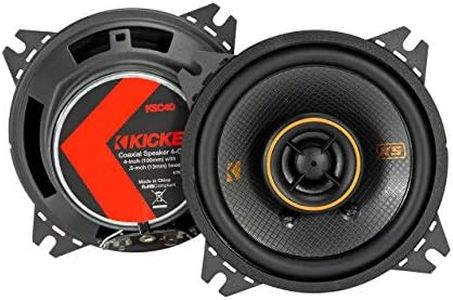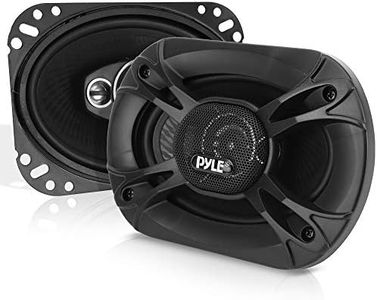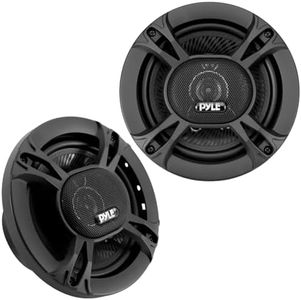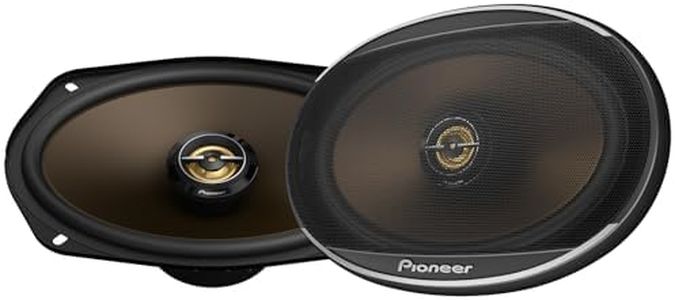We Use CookiesWe use cookies to enhance the security, performance,
functionality and for analytical and promotional activities. By continuing to browse this site you
are agreeing to our privacy policy
10 Best Car Stereo Speakers
From leading brands and best sellers available on the web.Buying Guide for the Best Car Stereo Speakers
Choosing car stereo speakers can transform your driving experience by delivering clearer, richer, and more enjoyable sound. The right speakers can make music, podcasts, and even audiobooks more immersive. To find the best match for your needs, it’s important to understand the key specifications that affect sound quality, fit, and durability. Think about the type of music you like, your desire for deep bass or crisp vocals, and the compatibility with your car before making a decision.Speaker SizeSpeaker size refers to the diameter of the speaker cone, usually measured in inches. This spec is important because it affects both the sound quality and compatibility with your car. Smaller speakers (around 3.5” to 5.25”) fit compact spaces and often produce clearer highs, while larger speakers (6” to 6x9”) allow for richer bass and fuller sound. When choosing size, you need to check what fits your car’s existing slots unless you plan on making modifications. If you love a strong bass presence or loud music, larger speakers are often the better choice, but for talk radio or subtle listening, smaller ones can be perfectly fine.
Speaker Type (Coaxial vs. Component)There are two main types of car speakers: coaxial (also called full-range) and component. Coaxial speakers combine multiple speaker elements like a woofer and tweeter into one unit and are easier to install, making them ideal for those looking for convenience and balanced sound. Component speakers separate the tweeter, woofer, and sometimes mid-range, allowing for better sound customization and higher audio quality but often require more complicated installation. If you prioritize simplicity and a step-up from factory sound, coaxial is a good route. For audiophiles seeking the best sound staging and clarity, component speakers are worth the extra effort.
Power Handling (RMS and Peak Power)Power handling tells you how much power (in watts) a speaker can handle from your stereo or amplifier. RMS (Root Mean Square) power is the continuous power a speaker can handle, which matters more for daily use, while peak power is the maximum it can take in short bursts. Speakers with a low RMS (20-50 watts) work well for most factory stereos, while higher RMS (50-100+ watts) are for more powerful aftermarket systems. To pick the right power rating, match your speaker’s RMS with the output of your car stereo or external amplifier, ensuring your speakers aren’t under-powered or overloaded.
SensitivitySensitivity measures how efficiently a speaker converts power into sound, reported in decibels (dB). Higher sensitivity means the speaker can produce more volume with less power, while lower sensitivity needs more power to reach the same loudness. Speakers with a sensitivity of 87 dB or lower are considered less efficient and are best paired with powerful sound systems. Higher sensitivity (above 90 dB) works well with lower-powered factory stereos. If you want loud sound without upgrading your whole system, go for higher-sensitivity speakers.
Frequency ResponseFrequency response indicates the range of sound (low bass to high treble) that a speaker can reproduce, given in Hertz (Hz). A wider range allows more detail and depth. Most car speakers range from about 50 Hz to 20,000 Hz (20 kHz). If you like booming bass, look for speakers with a low starting frequency, but if you’re more interested in vocals and instruments, a good mid and high range will suffice. Actual performance also depends on your car’s acoustics, so use this as a general guideline.
Material QualityThe materials used in the speaker’s cone, surround, and tweeter impact durability and sound quality. Cones made from materials like polypropylene are lightweight and weather-resistant, ideal for reliable performance over time. Tweeters may be made of soft materials like silk for smooth sound, or harder materials like metal for crisp highs. If you want speakers that last in changing temperatures and humidity inside a car, look for durable material and robust construction.
ImpedanceImpedance, measured in ohms (Ω), tells you how much resistance the speaker presents to the power source. Common values are 4Ω, 6Ω, or 8Ω. Lower impedance lets more power flow and can produce louder sounds, but it puts more demand on the stereo or amplifier. Most car systems are designed for 4Ω speakers. Always check your stereo or amp’s specs to ensure the impedance matches to avoid damaging the equipment or lowering sound quality.
